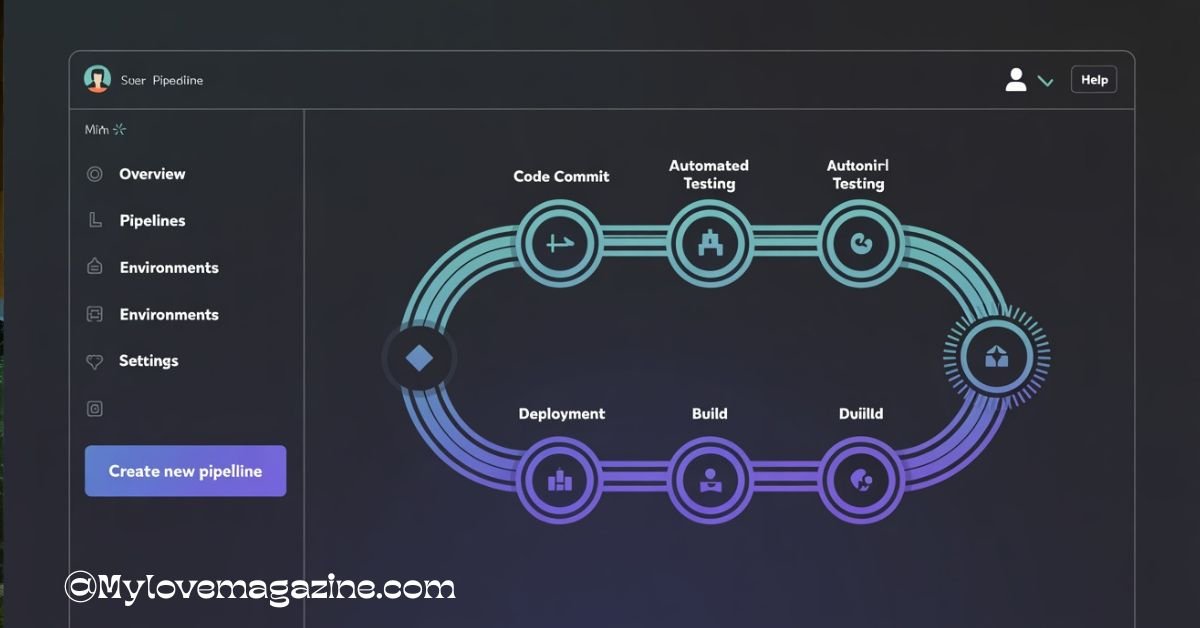What Are Dom Names? A Complete Guide to Domain Names!
Introduction to Domain Names
In today’s digital age, a strong online presence starts with a memorable and effective domain name. Often referred to casually as “dom names”, domain names are the foundation of your brand on the internet. Without a domain name, your website is just a collection of files sitting on a server — invisible and inaccessible to the world.
Choosing and managing a domain name may sound technical, but it doesn’t have to be. Understanding what dom names are, how they work, and how to choose the right one can help set your website up for long-term success.
In this guide, we’ll break down everything you need to know in simple, clear language. Whether you’re building a blog, an online store, or a business website, this article will help you make informed decisions about your domain. Let’s dive in.
How Do Domain Names Work?
At its core, a domain name is your website’s address on the internet. While websites are stored on servers identified by numerical IP addresses (like 192.0.2.1), domain names make it easy for people to remember and find your site.
When someone types your dom name into their browser, the Domain Name System (DNS) translates it into the corresponding IP address, directing them to your website. Think of DNS as the internet’s phonebook — it connects human-friendly names with machine-friendly numbers.
Domain names consist of two main parts: the actual name (called the second-level domain) and the extension (known as the top-level domain, or TLD). For example, in “example.com”, “example” is the second-level domain, and “.com” is the TLD.
This simple structure allows users to easily access millions of websites without memorizing long strings of numbers. That’s why selecting the right dom name is so crucial; it impacts accessibility, branding, and trust.
Types of Domain Names
There are several types of domain names, each serving different purposes and audiences. Understanding these helps you choose the right dom name for your website.
The most common type is the Top-Level Domain (TLD). Examples include .com, .net, and .org. Among these, .com is by far the most popular due to its universal recognition and trustworthiness.
Country Code Top-Level Domains (ccTLDs) represent specific countries, such as .uk for the United Kingdom, .ca for Canada, and .jp for Japan. These are ideal if your audience is primarily in a particular country.
Generic Top-Level Domains (gTLDs) are newer extensions such as .shop, .blog, .tech, and many others. These allow businesses to be more creative and descriptive with their dom names.
Sponsored Top-Level Domains (sTLDs) are specialized extensions sponsored by specific communities or organizations, like .gov for U.S. government entities or .edu for educational institutions.
Choosing the right type of domain extension enhances your brand’s credibility and ensures it resonates with your target audience.
How to Choose the Perfect Domain Name
Picking the right dom name is more than just finding something available — it’s about creating a brand identity and building trust.
Start by keeping your dom name short, memorable, and easy to type. Complex or lengthy names increase the chance of typos, which can lead to lost visitors. Using keywords related to your business can improve search engine visibility, but avoid keyword stuffing.
Avoid using numbers and hyphens; they often confuse users and are harder to remember. Always choose a name that reflects your brand’s personality and future goals.
Before finalizing your dom name, check for trademarks to avoid legal issues and verify social media handle availability for brand consistency.
Finally, think long-term. Changing a dom name later can hurt your SEO and confuse your audience. Choosing carefully from the start saves time, money, and effort.
Using Domain Name Generators for Inspiration
Sometimes, the perfect dom name feels just out of reach. This is where domain name generators come in handy.
What is a domain name generator?
A domain name generator is an online tool that suggests creative, available dom names based on keywords you input. These tools scan available domains across different extensions and provide instant ideas.
How tools like “doman name generator FFXIV” inspire creative names
Gamers and online communities often use name generators to create unique characters or guild names. For example, the “doman name generator FFXIV” helps players in Final Fantasy XIV come up with creative, lore-friendly names. Similarly, business owners can use domain name generators to find catchy, brandable dom names that stand out in crowded markets.
Examples of best domain name generators for businesses and gamers
Some of the most popular domain name generators include NameMesh, Lean Domain Search, and Nameboy. These platforms allow you to enter a keyword, set preferences, and explore hundreds of creative suggestions.
Whether you’re a gamer looking for a new in-game identity or a business creating a new brand, these tools can spark fresh ideas and help you secure a great dom name.
How to Register a Domain Name
Once you’ve decided on the perfect dom name, the next step is to register it.
Start by choosing a reputable domain registrar — popular options include GoDaddy, Namecheap, and Google Domains. Search for your desired dom name using their search tool. If your chosen name is available, proceed to checkout.
Most registrars offer add-ons like privacy protection, email forwarding, and website builders. While these are optional, privacy protection is highly recommended to keep your personal information safe from public WHOIS databases.
Registration fees vary depending on the TLD and registrar, but expect to pay around $10–$20 per year for standard dom names. Once registered, remember to renew it annually to maintain ownership.
Keep your registration details updated and set up auto-renewal to avoid accidentally losing your domain.
Domain Privacy and Security
After registering your dom name, securing it should be a top priority.
WHOIS privacy protection (also called domain privacy) hides your contact details from the public WHOIS database, reducing spam and protecting against identity theft.
Activate domain locking to prevent unauthorized transfers. Hackers sometimes attempt domain hijacking by tricking registrars into transferring ownership — domain lock adds an extra layer of defense.
Additionally, use strong, unique passwords for your domain registrar account and enable two-factor authentication (2FA).
Protecting your dom name is an ongoing process. Regularly monitor your domain status, keep your contact details updated, and stay vigilant against suspicious activities.
Premium Domain Names and Auctions
Some dom names are considered premium because of their short length, simplicity, or keyword relevance. Premium dom names can cost anywhere from a few hundred dollars to millions.
These domains often have a strong branding advantage and are more memorable. For example, insurance.com reportedly sold for $35 million, showing just how valuable a premium dom name can be.
Domain auctions are another route to secure desirable dom names. Websites like Sedo, GoDaddy Auctions, and NameJet host auctions where individuals and businesses bid on expiring or premium domains.
If you’re considering investing in a premium dom name, research its history, backlink profile, and trademark conflicts. While expensive, a premium dom name can instantly boost credibility and make marketing easier.
Domain Name vs Web Hosting
While dom names and web hosting are often discussed together, they serve different roles.
A dom name is your website’s address, while web hosting is the space on a server where your website’s files are stored. Think of your dom name as your house address and hosting as the actual house.
You can buy a dom name without hosting if you’re not ready to build your site yet. However, to launch a website, you’ll need both.
Many providers offer packages that include both dom names and hosting, making setup easier for beginners.
Choosing the right hosting depends on your site’s size, traffic, and technical needs, but your dom name choice remains equally critical for branding and SEO.
Legal and Trademark Considerations
When selecting a dom name, it’s crucial to consider legal implications.
Registering a dom name similar to an existing trademark can lead to legal disputes and financial penalties. Before finalizing, search the United States Patent and Trademark Office (USPTO) database or your local equivalent to ensure your chosen name doesn’t infringe on existing trademarks.
Cybersquatting — registering dom names with the intent to sell them to trademark owners at inflated prices — is illegal and can result in domain seizure.
Also, respect brand names, personal names, and cultural sensitivities when choosing your dom name. Consulting a legal professional or trademark expert is always wise for business-focused domains.
Legal due diligence upfront prevents expensive legal headaches later.
Future Trends in Domain Names
The domain industry continues to evolve rapidly.
Blockchain domains, such as those ending in .crypto or .eth, are gaining popularity for their decentralized nature and resistance to censorship. These dom names are stored on blockchain networks, giving owners full control without traditional registrars.
The expansion of new gTLDs (like .shop, .app, and .design) offers businesses more branding flexibility. Many companies now opt for creative TLDs to make their dom names more descriptive and memorable.
AI and machine learning are also influencing how domain name suggestions are generated, making it easier for businesses to find relevant, catchy names.
As online privacy concerns grow, expect more emphasis on security features for dom names, such as advanced encryption and enhanced WHOIS protections.
Staying updated with these trends can help businesses and individuals future-proof their online identity.
Tools and Resources
Several tools and resources make managing dom names easier:
- WHOIS lookup tools (like ICANN WHOIS and Whois.net) help you check domain ownership and availability.
- DNS management tools assist with pointing your dom name to the right hosting servers.
- Trademark search databases ensure your dom name doesn’t conflict with existing brands.
- Domain monitoring services alert you to potential trademark infringements or unauthorized changes to your dom name.
- Domain name generators provide creative suggestions when you’re stuck.
Using these resources makes the entire process — from brainstorming to maintenance — smoother and more secure.
Case Studies: Successful Domain Names
Looking at successful dom names can inspire your own choices.
Take Google.com, for example — a simple, short, and memorable dom name that’s now a global brand. Another case is Airbnb.com; originally “AirBedAndBreakfast.com,” they shortened it to improve memorability and brand appeal.
Tesla.com is another notable example. Elon Musk initially used TeslaMotors.com until acquiring Tesla.com for a reported $11 million, recognizing the value of a shorter, cleaner dom name.
These examples show that investing in the right dom name early can pay off significantly. It builds brand authority, improves SEO, and makes word-of-mouth referrals easier.
Frequently Asked Questions
1. Can I change my dom name after launching my website?
Yes, but it can affect SEO rankings and brand recognition. Redirects and rebranding efforts require careful planning.
2. What happens if I forget to renew my dom name?
Your domain may enter a grace period. If not renewed, it can be auctioned off or acquired by someone else.
3. Are dom names case-sensitive?
No. Dom names are not case-sensitive. “Example.com” and “example.com” are treated the same.
4. Can I own multiple dom names?
Yes. Many businesses register multiple dom names to protect their brand or redirect traffic.
5. What is the difference between a dom name and a URL?
A dom name is part of a URL. The URL includes the protocol (https://), domain name, and path (e.g., /about-us).
Conclusion
Choosing the right dom name is one of the most important steps when creating your online presence. Your dom name represents your brand, affects SEO, and influences how visitors perceive you.
Take time to research, brainstorm creative options, check legal aspects, and protect your investment. By following the steps outlined in this guide, you’ll be well on your way to building a strong foundation for your digital future.
Ready to claim your perfect dom name? Start today and shape the online identity your audience will remember.














Post Comment